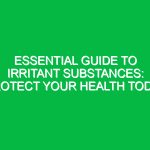Introduction
Hello team! Today, we’re here for an important toolbox talk focused on a critical aspect of our Health, Safety, and Environment (HSE) practices: Seal Checks. As we prepare to start our work, it’s essential that we understand the significance of these checks and how they contribute to our overall Safety and efficiency on the job. Effective Seal Checks can prevent accidents, protect our equipment, and ensure a safe working environment for everyone.
What are Seal Checks?
Seal Checks are systematic inspections conducted to ensure that seals on equipment, containers, and machinery are functioning correctly. These seals are crucial for maintaining the integrity of various systems, preventing leaks, and protecting both workers and the environment from hazardous substances. Whether we are dealing with chemical containers, hydraulic systems, or pneumatic tools, ensuring that seals are intact can be the difference between a safe workday and a serious incident.
Why are Seal Checks Important?
Understanding the importance of Seal Checks is vital for every employee. Here are some reasons why:
- Preventing Accidents: Faulty seals can lead to leaks, spills, and accidents. By conducting regular checks, we minimize the risk of such incidents.
- Protecting Equipment: Seals help maintain pressure and prevent contamination. Regular checks extend the lifespan of our equipment.
- Environmental Safety: Leaks can harm the environment. Effective Seal Checks help us comply with environmental Regulations.
- Compliance with Regulations: Many industries have strict regulations regarding seal integrity. Regular checks ensure we stay compliant.
The Process of Conducting Seal Checks
Now that we understand the importance, let’s dive into how to conduct Seal Checks effectively. Here’s a step-by-step guide:
1. Preparation
Before you begin, gather all necessary tools and Personal Protective Equipment (PPE). This may include gloves, goggles, and any specific tools needed for inspection.
2. Visual Inspection
Start with a thorough visual inspection of the seals. Look for:
- Cracks or tears in the seals.
- Signs of wear or deformation.
- Any fluid leaks around the seal area.
3. Functional Testing
After the visual inspection, conduct functional tests where applicable. This could involve applying pressure to see if the seal holds or checking for leaks with soapy water or specialized leak detection tools.
4. Documentation
Document your findings. Record any defects, the condition of the seals, and any corrective actions taken. This documentation is crucial for compliance and future reference.
5. Reporting
If you find any issues, report them immediately to your supervisor. Prompt reporting can prevent larger problems down the line.
Best Practices for Seal Checks
To maximize the effectiveness of our Seal Checks, here are some Best Practices to follow:
- Schedule Regular Inspections: Make Seal Checks part of your routine Maintenance schedule.
- Use the Right Tools: Ensure you are using appropriate tools for the type of seals you are inspecting.
- Stay Trained: Participate in Training sessions to stay updated on Best Practices and new technologies.
- Encourage Team Involvement: Make it a team responsibility. Encourage colleagues to also take part in Seal Checks.
Real-Life Scenario: The Importance of Seal Checks
Let’s consider a hypothetical scenario. Imagine a situation where a hydraulic system in a construction site had a faulty seal that went unnoticed during the daily checks. As the machinery operated, the seal failed, resulting in hydraulic fluid leaking into the surrounding area. This not only posed a Safety hazard for the workers but also led to an environmental cleanup effort that cost the company thousands of dollars. Had the team conducted thorough Seal Checks, this incident could have been avoided.
Potential Hazards and Risks
When it comes to Seal Checks, awareness of potential Hazards is crucial. Here are some risks associated with inadequate seal maintenance:
- Chemical Exposure: Leaking seals can expose workers to harmful chemicals.
- Fire Hazards: Certain fluids are flammable, and leaks can create fire risks.
- Environmental Contamination: Failure to address leaks can lead to soil and water contamination.
Regulations and Compliance
It is essential to be aware of the regulations that govern Seal Checks. Various health and safety regulations require that companies maintain the integrity of their equipment and ensure that seals are in proper working condition. Compliance with these regulations not only protects employees but also mitigates legal risks for the company. Familiarize yourself with the local and national regulations applicable to our industry and ensure our practices align with them.
Conclusion
In conclusion, Seal Checks are a vital part of our HSE responsibilities. By conducting thorough inspections, we can prevent accidents, protect our equipment, and ensure a safe working environment. Remember, safety is a collective responsibility; we all play a role in maintaining our workplace’s integrity.
Thank you for your attention and commitment to safety today. If you have any questions or thoughts about Seal Checks, feel free to share. Let’s keep our work environment safe and efficient!


